FTTP
MetroNet’s FTTP buildout in Florida; Merger with Vexus Fiber
Continuing with the massive U.S. fiber to the premises (FTTP) movement, regional fiber carrier MetroNet (headquartered in Evansville, Indiana) said it will bring fiber-optic internet access directly to homes and businesses throughout the Deltona, FL and neighboring communities, including DeBary and Orange City.
Deltona marks the third community in Florida that will have access to MetroNet services through a fully funded $35 million investment in the community. The three-year construction project is set to begin in the summer of 2022, with the first customers able to receive service as early as the fall of 2022.
Once completed, Deltona will join the country’s internet elite as a Gigabit City. Only about 40 percent of households in the U.S. have access to symmetrical upload and download gigabit (1,000 mbps) speeds that only fiber optic networks can provide.
“MetroNet is thrilled for Deltona residents and businesses to have access to our future-proof services that will allow sparkling 4k video streaming, glitch-free gaming, crystal-clear virtual meetings, and internet experiences of the future that we can only begin to imagine,” said John Cinelli, MetroNet’s CEO. “MetroNet is proud to soon be able to add Deltona to our growing list of Gigabit Cities.”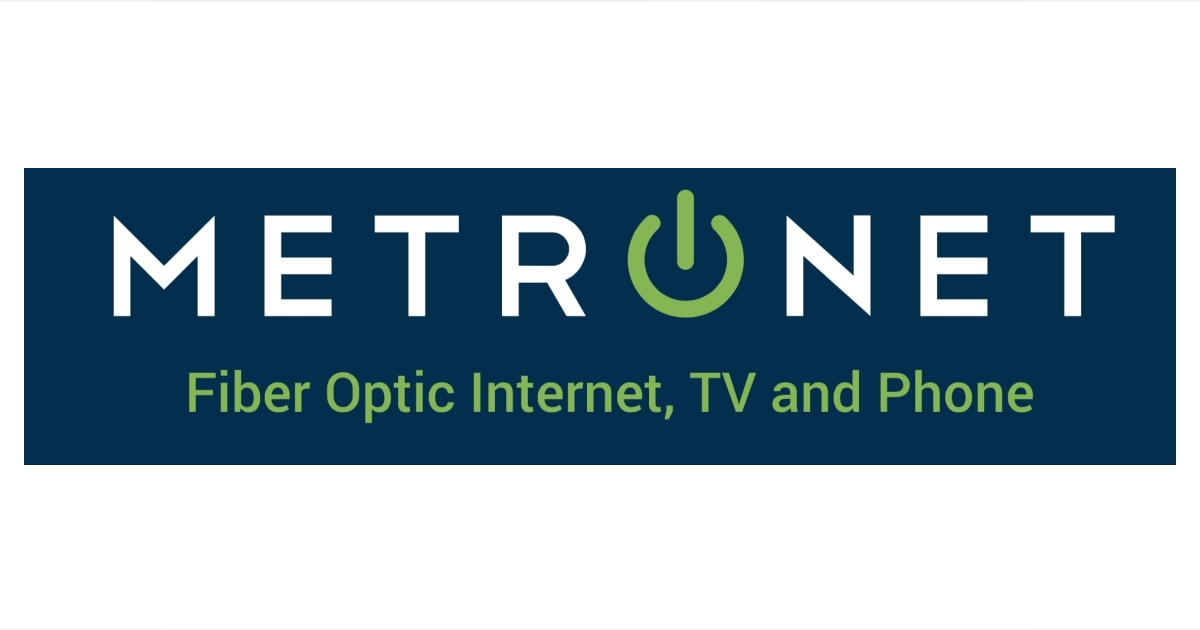
MetroNet plans to hire local market management positions, sales and customer service professionals, and service technicians to support the Deltona area. Those interested in joining the MetroNet team can visit MetroNetInc.com/careers to search available positions and to submit applications.
………………………………………………………………………………………………………………………
Last week, Metronet announced it has merged with fellow independent fiber based network provider Vexus Fiber. The combined companies will continue to operate under their existing brands and with their existing executive roster. Financial terms of the deal were not disclosed.
Vexus, based in Lubbock, TX, deploys and operates FTTP networks in Texas and Louisiana, with plans for expansion in New Mexico. Markets currently serving those states include Lubbock, Amarillo, Wichita Falls, Abilene and surrounding areas of Texas, as well as Hammond, Covington and Mandeville in Louisiana. New FTTP networks in the Rio Grande Valley are in various stages of deployment (see “Vexus Fiber to Build FTTH Network in Rio Grande Valley Region of Texas”), Tyler, Nacogdoches, and San Angelo, TX; Lake Charles, LA; and Albuquerque and Santa Fe, NM. Investors in the company included Pamlico Capital and Oak Hill Capital.
Metronet is operating or building FTTP networks in more than 120 communities in Indiana, Illinois, Iowa, Kentucky, Michigan, Minnesota, Ohio, Florida, North Carolina, Virginia, Texas, Wisconsin, and Missouri. It had received cash from KKR last April (see.) “KKR will take stake in Metronet as part of new funding round”) Oak Hill Capital is also an investor. Both companies provide gigabit or faster broadband services to their residential and business customers.
“We are very excited to welcome Vexus Fiber and their partners to Metronet,” said Metronet CEO John Cinelli. “Vexus has rapid growth and a high-customer-service mindset, similar to Metronet, and joining them allows us to expand our service area to even more Americans.”
“At Wexus, our mission is to bring our high-quality service to as many homes and businesses as possible in the Southwest,” said Jim Gleeson, president and CEO of Wexus. “With this merger, we can reach even more people faster.”
About MetroNet:
MetroNet is the nation’s largest independently owned, 100 percent fiber optic company headquartered in Evansville, Indiana. The customer-focused company provides cutting-edge fiber optic communication services, including high-speed Fiber Internet and full-featured Fiber Phone with a wide variety of programming.
MetroNet started in 2005 with one fiber optic network in Greencastle, Indiana, and has since grown to serving and constructing networks in more than 150 communities across Indiana, Illinois, Iowa, Kentucky, Louisiana, Michigan, Minnesota, Ohio, Florida, North Carolina, Virginia, Texas, Wisconsin, Missouri, and New Mexico. MetroNet is committed to bringing state-of-the-art telecommunication services to communities — services that are comparable or superior to those offered in large metropolitan areas.
MetroNet has been recognized by PC Mag as one of the Top 10 Fastest ISPs in North Central United States in 2020 and Top 10 ISPs with Best Gaming Quality Index in 2021. Broadband Now has recognized MetroNet as the Top 3 Fastest Internet Providers and Fastest Fiber Providers in the Nation in 2020, and #1 Fastest Mid-Sized Internet Provider in two states in 2020. In 2020, MetroNet was awarded the Vectren Energy Safe Digging Partner Award from Vectren. For more information, visit www.MetroNetinc.com.
Media Contact: Katie Custer [email protected] 502.821.6784
References:
Ziply Fiber deploys 2 Gig & 5 Gig fiber internet tiers in 60 cities – AT&T can now top that!
Ziply Fiber has launched two multi-gigabit, symmetrical broadband Internet tiers– at 2 Gbit/s and 5 Gbit/s – in 60 cities and towns in parts of Washington, Oregon, and Idaho. The two new fiber Internet service plans will initially be available to nearly 170,000 physical addresses in those three states. This comes after Ziply conducted a successful small market test in Kirkland, Washington. Customers in Montana will gain access to the multi-gig options later this quarter, with availability expected across most of the company’s existing footprint by the middle of the year.
Pricing for the 2-Gig tier runs $120 per month while the 5-Gig tier costs $300 per month. Both multi-gig tiers will require users to get a special router that includes WiFi 6 compatibility, a 10G WAN port and either a 2.5G LAN port for the 2-gig plan or a greater than 5G LAN port for the 5-gig option.
Ziply is the first among regional and national residential providers — those with a customer base of more than 1% of the US population — to deliver these speeds. By doing so, Ziply has become the fastest major internet provider not only in the Northwest, but across the entire U.S.
Ziply Fiber, formed in 2020 via the acquisition of Frontier Communications’ operations in Washington, Oregon, Idaho and Montana, expects to launch the new multi-Gig tiers to the rest of its footprint by the second quarter of 2022, and to make them available in every new fiber market launched thereafter, said Harold Zeitz, Ziply Fiber’s CEO.
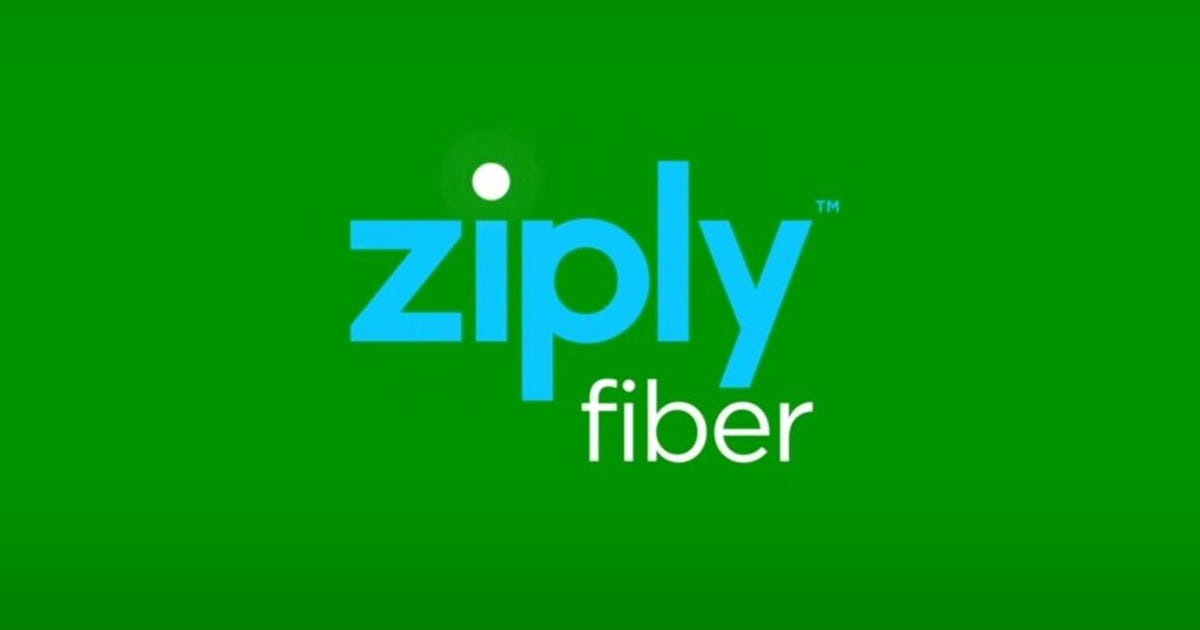
Zeitz told Fierce Telecom that more than half of Ziply’s customers already take its 1 Gbps plan, “so we already have customers who seem to want faster speeds compared to others.” He added the December trial covered five markets across Washington and Oregon and included a sample group of “tens of customers” who proactively sought access to the faster speed tiers. “There were no problems whatsoever,” Zeitz said of the trial. “We were able to demonstrate measured speed and it gave us confidence to go ahead and launch it broadly.”
Ziply Fiber’s new uncapped and no-contract tiers follow the company’s ongoing deployment of a 10-Gig capable XGS-PON access network and underlying core network. Zeitz said the launches prove that consumers don’t have to live in a big city to get big speeds. “It’s a revitalization opportunity,” he said. “It demonstrates the future-proof element of the technology.”
The company also sells a 50Mbit/s tier for $20 per month and a 200Mbit/s service for $40 per month. Zeitz estimates that “well over half” of Ziply Fiber’s broadband customers choose the 1-Gig tier.
Zeitz said offering broadband without a cap or a contract puts welcome pressure on the company. “Yes, we think it’s a differentiator, but I also think it helps motivate us to make sure we’re delivering great service, he said.
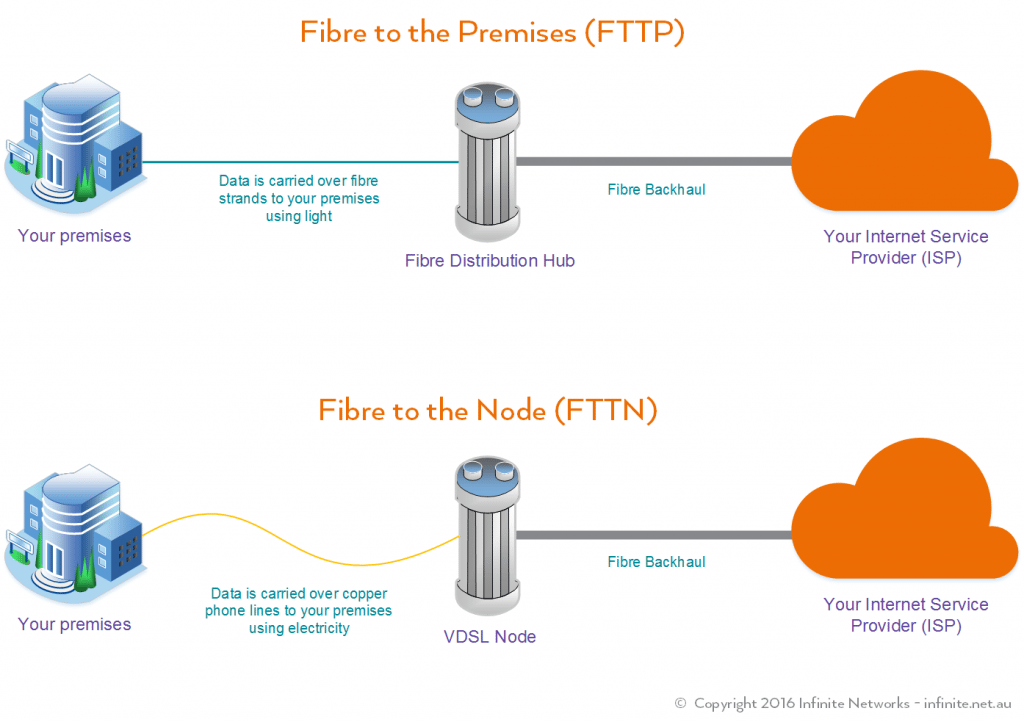
Other Gig FTTP Internet competitors:
Ziply Fiber’s 5-Gig service appears to raise the bar on a fiber-to-the-premises (FTTP) residential broadband offering offered in multiple states. With the exception of Google Fiber and Xfinity, none of the top internet providers have dared to push the internet speed limit past a single gig. Google Fiber offers a 2-gigabit plan throughout most service areas while a limited few Xfinity customers can sign up for 3 gigs, but no 5 Gig yet. Among smaller regional players, EPB of Chattanooga, Tennessee, currently offers a residential 10-Gig service starting at $299 per month in select areas.North Dakota’s MLGC debuted a 5 Gbps service tier in 2020, while TDS rolled out a 2-gig offering and Dobson Fiber launched a 10 Gbps offering last year.
Here’s the current competitive status from nationwide FTTP providers:
- Comcast’s targeted residential FTTP service, Gigabit Pro, was recently upgraded to deliver speeds of 3 Gbit/s for $299.95 per month (with a two-year contract).
- Google Fiber has been expanding the availability of a fiber-based service that delivers 2 Gbit/s down by 1 Gbit/s up.
- AT&T has hinted that a multi-gigabit service is in the works, but has not announced pricing or launch timing.
Analysis:
The burning question this author has is how will Zipply customers use even a fraction of their allotted 2 Gig or 5 Gig upload and download speeds? I have over 10 connected WiFi devices in my home where my 100 Mb/sec download speed is sufficient.
“This is for people to develop new use cases, et cetera,” Zeitz concluded. “I think we don’t know all the things that people will do and so we’re an enabler.”
Also, the extra gear needed won’t be cheap. To open up any potential in-home bottlenecks, Ziply Fiber is recommending an Asus AX6000 Wi-Fi 6 router or a similar device. Customers will also need an SFP+ (enhanced small form-factor pluggable) with an RJ-45 connector that’s compatible with the router to deliver up to 5-Gig. Ziply Fiber is also selling such products online – an Asus router for $449.95, and the SFP+ for $42.99, or both bundled together for $492.94.
For the full 5-Gig, customers will need a wired Ethernet connection to the router. Depending on the performance capabilities the computer, a customer on Ziply Fiber’s multi-gig service will likely need an Ethernet adapter/dongle that supports 2.5-Gig or 5-Gig.
……………………………………………………………………………………………………………………………………………………..
24 January 2022 Update: AT&T can now equal 2 Gig and 5 Gig FTTP speeds
AT&T has boosted its existing fiber in parts of more than 70 metro areas around the U.S. to offer 2-Gig and 5-Gig symmetrical upload and download speeds.
“Where we’re launching 2-Gig and 5-Gig, we previously had 1-Gig speeds available,” said AT&T’s SVP of Broadband Product Development Cheryl Choy. The upgrades announced today affect about 5.2 million people out of about 16 million households that AT&T currently passes with gigabit speeds.
Asked why AT&T isn’t increasing speeds for all 16 million households that it passes with fiber, Choy said it’s because the company is “on a PON evolution.” It is in the process of moving from GPON to XGS PON via card upgrades and software improvements. These upgrades allow it to boost speeds above 1-Gig. Choy said that since 2019 all of AT&T’s newly laid fiber has been capable of multi-gig speeds.
Although the news of multi-gig fiber today did not require any new fiber to be laid, the company is also laying new fiber, and its goal is to cover 30 million customer locations with fiber by year-end 2025.
Pricing:
AT&T also announced it’s rolling out “straightforward pricing” across its AT&T Fiber portfolio. The 2-Gig fiber service costs $110 per month plus taxes with autopay; and the 5-Gig service costs $180 per month plus taxes with autopay.
Prices are a little higher for businesses at $225 per month for 2-Gig; and $395 per month for 5-Gig.
The company will not charge any equipment fees, nor will it require an annual contract or implement any data caps. The service also includes Wi-Fi.
Choy said, “We’ve amped up our Wi-Fi technology.” In late 2020 AT&T launched its Wi-Fi 6 enabled gateway, which provides more capacity for more connected devices. Those Wi-Fi devices will be able to take advantage of the new multi-gig speeds. AT&T’s Wi-Fi currently uses 2.4 Ghz and 5 Ghz spectrum.
According to a survey conducted in 2021 by Recon Analytics on behalf of AT&T, the average consumer has 13 connected devices in their home. But that’s expected to boom in the coming years, which will require more bandwidth.
Finally, as part of today’s news, AT&T said it has achieved up to 10-Gig speeds on fiber in its labs.
https://www.fiercetelecom.com/broadband/att-upgrades-its-fiber-network-offer-2-gig-5-gig-speeds
Ziply Fiber References:
https://www.fiercetelecom.com/broadband/ziply-debuts-2-gig-5-gig-internet-tiers-60-cities
https://www.broadbandworldnews.com/author.asp?section_id=733&doc_id=774718&
https://ziplyfiber.com/news/release/735
Frontier Communications reports added 45,000 fiber broadband subscribers in 4Q-2021 – best in 5 years!
Frontier Communications added 45,000 fiber broadband subscribers in the fourth quarter, its best performance gains in five years, Frontier’s Scott Beasley said at the 2022 Citi Apps Economy Virtual Conference. The company hopes to expand by 1 million fiber locations this year as part of plan to reach 6 million by 2025.
Comment: That’s great progress for a company that filed for bankruptcy in April 2020 with a plan to cut more than $10 billion of its $17 billion debt load by handing ownership to bondholders. It was the biggest telecom filing since WorldCom in 2002, reflecting years of decline in its business of providing internet, TV and phone service in 29 states.
When combined with legacy DSL losses, Frontier added 9K net new broadband subscribers. Frontier is currently on an aggressive fiber build strategy that aims to add a total of 6 million locations by the end of 2025, resulting in 10 million locations reached in total. Beasley reports the company added 600K new fiber locations in 2021, with a goal of adding another million locations by the end of 2022. Beasley reports that the much discussed supply chain challenges facing the broadband industry have not had a significant impact at Frontier.
“We’ve managed through supply chain constraints and been able to perform very well in our fiber build and continue to ramp that up for 2022,” he said.
- This marked the first time in more than five years that the Company has posted total broadband customer growth in a quarter.
- The Company expects to continue growing the total broadband customer base as its fiber build accelerates.
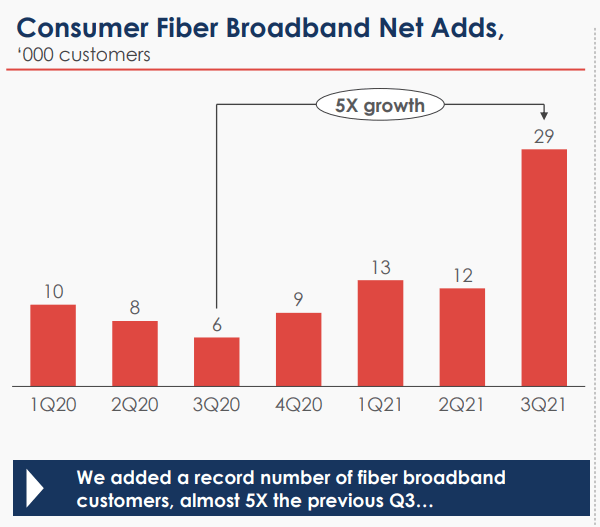
Source: Frontier Communications Q3 2021 earnings presentation
Frontier has completed ‘wave 1’ of this fiber expansion. The company is now beginning ‘wave 2,’ which will take them through 2025, getting them to 6 million new locations. Build costs in wave 2 are a bit higher at $900 to $1,000 per fiber location.
Frontier envisions a ‘wave 3’ coming, but that’s outside the scope of their current committed-to fiber build. Beasley says Frontier will look to leverage government funding programs and other partnerships to help fund wave 3 fiber builds.
“There could be scenarios where we accelerate the build of some locations in wave 3 into wave 2,’ he said in discussing Frontier broadband growth. “That will likely be a destination of significant government funding as the roughly $45 billion of infrastructure bill funding that goes to broadband will be targeted at locations like wave 3.”
Asked about potential competition from fixed wireless access (FWA) and satellite broadband services, Beasley said neither presents a material threat just yet. While FWA may gain traction in some ultra-dense urban locations and satellite in extremely rural areas, Beasley asserted neither technology will be able to stand up against Frontier’s gigabit fiber offerings. The company already offers 1 Gbps and is planning the rollout of a 2 Gbps plan in the first half of this year as well as a 10 Gbps tier somewhere down the line. “It’s a technology we’re watching closely but don’t think it can compete with our core symmetrical speeds in fiber,” Beasley said of FWA.
“Against our core gigabit plus offers, 1 gig symmetrical speeds now, we’ve said we’re going to launch 2 gig in the first half of 2022, eventually we’ll move to 10 gig, the core network is 10 gig capable now, we’ve trialed 25 gig successfully in certain parts of the network,” he said. “I don’t think fixed wireless has the capacity to compete with that core infrastructure. It will be competitive in certain niches of the market…but I don’t think it can compete with our core symmetrical speeds and fiber,” he added.
References:
https://kvgo.com/citi-apps-economy-conference/frontier-jan-2022
With 45K New Fiber Subscribers, Frontier Sees First Positive Broadband Growth in 5 Years
Cable One joint venture to expand fiber based internet access via FTTP
Cable One [1.] (aka Sparklight) has announced a joint venture (JV) with three private equity firms, seeking to speed its expansion of fiber based Internet access to underserved markets.
The joint venture reflects a shared commitment from Cable One and the investors to provide fast and reliable connectivity via FTTP internet to underserved markets and will allow for more rapid expansion of fiber internet to homes and businesses in small cities and big towns. Cable One owns a majority of Clearwave Fiber and the private equity investors are committed to make substantial cash investments to support the acceleration of Clearwave Fiber’s expansion.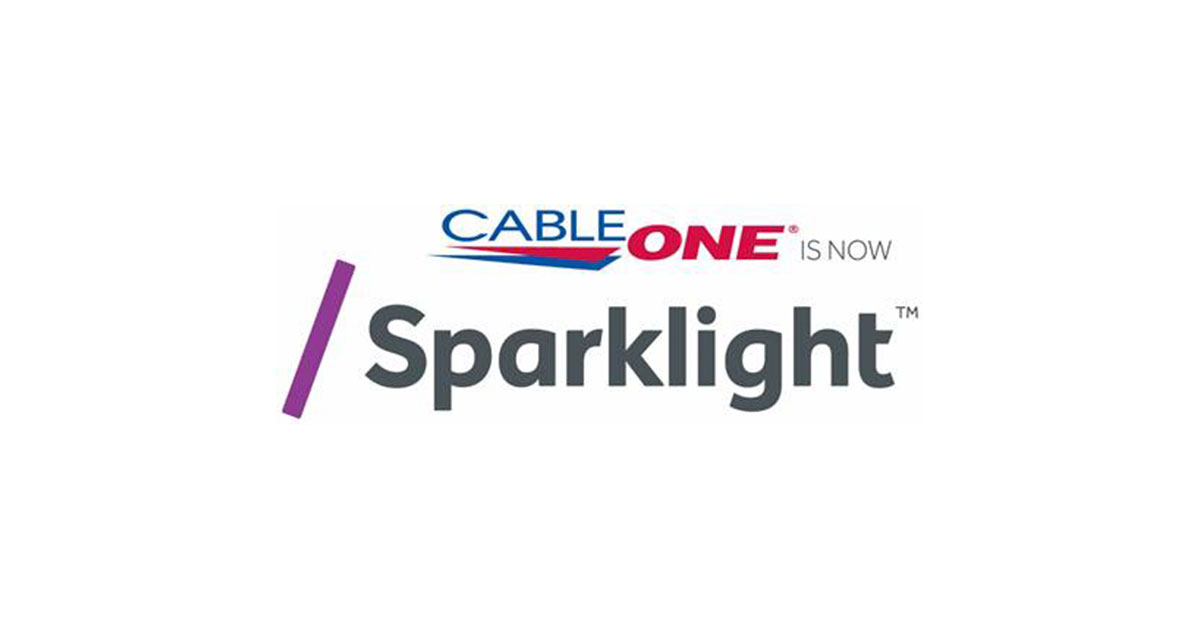
Clearwave Fiber will be led by Executive Chairman Michael Gottdenker and CEO David Armistead, both of whom were part of Hargray’s executive leadership team from 2007 until its 2021 sale to Cable One, providing continuity of proven leadership and a continued commitment to Cable One’s shared culture, purpose, and values.
“This strategic investment will help accelerate the deployment of fiber-based broadband services to a range of markets, including underserved areas of the country,” said Michael Gottdenker, Executive Chairman of Clearwave Fiber. “Our team is motivated by our shared core values of customer service and improving lives through connectivity and is excited to bring fast and reliable Clearwave Fiber broadband to homes and businesses across the country. We are thrilled to welcome GTCR, Stephens, and TPO to the Clearwave Fiber family and look forward to our continued partnership with Cable One.”
Julie Laulis, Cable One President and CEO said:
“We look forward to supporting and sharing in Clearwave Fiber’s growth over the coming years while remaining focused on our primary business, increasing penetration rates, integrating recently acquired companies and driving higher margins and greater free cash flow. We did not take lightly our choice of partners in this transaction and are excited to be working with like-minded individuals who share our core principles.”
“Five years ago, Gig speeds were virtually unheard of in non-urban markets across the U.S. We are proud to have been able to launch Gig service and level the playing field for rural markets where access to affordable, high-speed internet is just as vital as in more urban markets. A fast and reliable internet connection means rural residents can telecommute rather than having to move to find work. It means access to medical care via telehealth services; the ability to achieve a higher education online; and the cultivation of entrepreneurship and economic growth.”
…………………………………………………………………………………………………………….
KeyBanc Capital Markets analysts indicated in a research note the deal is a positive for Cable One, noting it will allow the company to effectively offload heavy investment in fiber to the JV while maintaining majority ownership. They drew a comparison to WideOpenWest’s recently announced fiber expansion plan, writing that “in contrast to CABO, WOW will fund the expansion on-balance sheet, while CABO’s transactions move off-balance sheet, neither being wrong, in our view.”
“We believe this shows there is a lot of FTTP build opportunity within and around CABO’s footprint (likely more than one Company can handle),” Keybanc’s team conclude
……………………………………………………………………………………………………………….
About Cable One:
Cable One, Inc. (NYSE:CABO) is a leading broadband communications provider committed to connecting customers and communities to what matters most. Through Sparklight® and the associated Cable One family of brands, the Company serves more than 1.1 million residential and business customers in 24 states. Over its fiber-optic infrastructure, the Cable One family of brands provide residential customers with a wide array of connectivity and entertainment services, including Gigabit speeds, advanced WiFi and video. For businesses ranging from small and mid-market up to enterprise, wholesale and carrier, the Company offers scalable, cost-effective solutions that enable businesses of all sizes to grow, compete and succeed.
References:
https://www.fiercetelecom.com/telecom/cable-one-targets-rapid-fiber-expansion-jv-deal
Open Access Fiber Networks Explained; Underline’s Intelligent Community Network
In Open Access Fiber networks, the same physical network infrastructure is utilized by multiple providers delivering services to subscribers. The Open Access business model has been drawing attention globally as governments and municipalities find the concept of offering competition between providers and the freedom of choice for the subscriber is essential. It has also proved to be a feasible way to connect rural areas where service providers might have a hard time generating enough revenue to justify investing in their own network infrastructure.
Open access fiber networks can be the foundation for distributed healthcare, 5G, and resilient, modernized infrastructure—including responsible energy creation and secure community smart grids.
For subscribers to benefit from the freedom of choice and competition between providers that are delivering services using the same network infrastructure they will need a comprehensive way to browse the assortment of services offered.
Open Access network operators must keep track of:
- Every single subscriber in the network, their physical address, their “technical address” (switch, switch port, etc.).
- Which services they are buying from which provider/s.
- The total number of customers and/or services bought if you’re operating in a three-layer model where you have to report back to the network owners how their network is utilized.

……………………………………………………………………………………………………………………………………….
Already common in Europe with Sweden as the best known example, open access networks are just beginning to gain market traction in the U.S. While U.S. community-wide network operators like SiFi Networks and UTOPIA Fiber (Utah) have adopted a wholesale-like business model, newcomer Underline is taking a bit more of a direct approach.
“When people say open access in this country, they typically mean ISPs can come in and lease fiber and choose to build a given neighborhood that hasn’t been overbuilt yet. We mean something very different,” Underline CEO Robert Thompson told Fierce Telecom. “We are not a wholesale leaser of fiber. We are the fiber network literally to the doorbell.”
Underline isn’t just providing physical fiber-to-the-home infrastructure, but also a unified billing system and cybersecurity layer. The latter will allow the communities it serves to deploy smart city applications over an on-demand Layer 2 (Data Link layer) connection that will never touch the Layer 3 (Network layer) public internet, Thompson said.
“On the one hand, we directly face consumers and businesses, schools and so forth and we provide them network access connectivity and technology for a monthly connection fee. On the other hand, we look like a network infrastructure-as-a-service provider to the ISPs or content community,” Thompson said.
“We don’t provide IP,” he continued. “We’re going to move your traffic from your house ultrafast over fiber and we’re going to hand off you and your traffic to the internet service provider of your choosing. That ISP is then your IP, the routing of your traffic. They’re connecting you to that glorious world wide web,” he added.
Thompson said Underline will charge users directly on a monthly basis for connectivity, with their chosen ISP getting a portion of that cost. So, for instance, in the case where a subscriber takes a $65 per month symmetric gigabit plan, the ISP will get a $15 cut. Underline also plans to charge licensing and per subscriber fees for use of its technology stack.
Underline is now initiating construction in its first market: Colorado Springs, CO. The company will offer residential speeds up to 10 Gbps and enterprise service up to 100 Gbps, with qualifying households eligible to receive a discounted rate on Underline’s bottom tier symmetrical 500 Mbps plan.
The project will be completed in several stages, with a Phase I build set to connect 24,000 homes and 4,000 businesses with 225 route miles of fiber plant. Initial customers will include the the National Cybersecurity Center, the new Space Information Sharing and Analysis Center and Altia Software.
Thompson says that Phase II will cover roughly the same amount of ground and Underline also has a build agreement with an unnamed city “immediately surrounding” Colorado Springs. Taken together, construction in both phases and the second city will amount to “an exercise of approximately $125 million in total capital.”
“We are after this with a vengeance, and we are very thankfully supported by very strong capital,” Thompson said, noting a “drumbeat of steady announcements of drills in the dirt in new communities” is on the way.
Thompson said Underline is targeting communities with populations between 20,000 and 750,000. He noted that such communities have “historically been basically ignored by the incumbents (large telcos) and which by and large will not qualify” for federal support for broadband deployments.
Beyond that, he said Underline’s market assessments include factors like demand point density per fiber route mile, a population productivity ratio, a competition index and a social equity analysis. The latter is a key priority for Underline and “part of our social purpose,” Thompson explained.
“We want to understand and we actually want to target communities that have a significant portion of their demand points that have no internet at all or very poor internet at home because of socio economic status. This country’s got to have internet that’s fast, affordable and fair,” he concluded.
References:
https://www.fiercetelecom.com/operators/underline-has-a-different-vision-for-open-access-fiber-u-s
https://www.cossystems.com/about/open-access/
https://www.foresitegroup.net/what-you-need-to-know-about-open-access-networks-2/
Orange España: commercial deployment of 10 Gbps fiber in 5 cities

Orange’s new 10Gbps fiber access will be at Love Total Plus and Love Total Plus 4 rates for residential customers, and at Love Empresa 3 and 5 rates for freelancers and small businesses. Adopting this speed will mean an increase of 10 euros /month on the price of the same.
In the 10Gbps offered by Digi, only 8Gbps was obtained, and it is expected that in the case of Orange it might be similar. It remains to be seen, what actual performance it offers.
References:
Orange launches 10Gbps symmetric fiber for individuals and companies, first in five major cities
AT&T CEO John Stankey: 30M or more locations could be passed by AT&T fiber
AT&T CEO John Stankey was interviewed by Brett Feldman, Goldman’s U.S. telecom and cable analyst. AT&T is both a telecom and media company. We focus on the former for the IEEE Techblog. Here are selected telecom related comments Stankey made (BOLD font emphasis added):
We’re pulling (market) share back from our two largest competitors (Verizon and T-Mobile). I feel good about how we’re doing that. There’s more to be done as we invest in fiber, and we can compliment our wireless business with fiber. There’s opportunities for us to take communications further than what we’ve traditionally done at AT&T. And I think that business should be recognized for being a leading global communications business, like it is, very uniquely positioned with more fiber than any other communications company on the face of the planet, with a great wireless asset domestically in the U.S. and in Mexico, an opportunity to bring those things together, and run it incredibly effectively as a focused business. I think we’ve got a great story there.
I think AT&T is in a great position moving forward. I think the industry frankly is in a great position. I think there’s tremendous promise right now in what ubiquitous high capacity bandwidth with the kind of capabilities that 5G brings in terms of the density that it can afford, the number of devices, the ability to use technology to do things like network slice (requires 5G SA core network which Microsoft is building for AT&T) and begin to differentiate the network. I think this is going to be great for society. I think this is going to be great for the U.S. economy as a whole. If I had to bet, we don’t have the numbers for 2021, certainly can’t project 2022, but I have a sense of where this industry is going. (This author totally disagrees, largely because real, standards based 5G has yet to be deployed as there is only a standard for the RAN which doesn’t meet URLLC performance requirements. No standard for 5G SA core network.).
We’re probably going to see record infrastructure investment coming out of this industry in this period of time. And I think it’s going to equip the United States and our economy and our infrastructure in a way that we’ve never seen. I think that’s going to be incredibly powerful. And I think it’s not only going to be good for AT&T, because I think we have the right kind of wherewithal and the right kind of capability to be right alongside others that are investing at a high clip to bring that infrastructure forward. I think we’ll do just fine with where we are there. I believe when unleashed we have some of the best network minds in the country. I believe that dense fiber footprint that we have that’s denser than anybody else in the United States when engineered properly on top of a great spectrum assets and a great wireless business, it’s going to make our combined product offer and our business even better and more capable to deal with what customers need to do. So, I feel really comfortable about that. And I can do nothing more than not ask you to look at my prognostications, but look at how we’re performing in the market today.
We’ve now started doing some things quietly behind the scenes. We have another muscle to build here, which is how do we begin to work on software to differentiate our products and services in a way that makes our product better than what our competitors can do, because we do have a different asset base, and we are able to serve every corner of the market from the largest of enterprises to the smallest apartment somewhere in the United States. And I don’t think we’ve done as much as we can do in that vein, to actually make that real for our customers and the right products and the right services and the right offers. And so, rebuilding that product engine that we can do that and begin to differentiate allows us to do things that won’t necessarily just hinge on, can I get an attractive handset?
Brett Feldman: I believe your fiber network passes something around 15 million customer locations right now, you’re targeting to ultimately get to 30 million by 2025, that would still only be about half roughly half of the customer locations in the AT&T wireline footprint. Question we’ve gotten is how did you decide what the right target was? Why is it 30? And what really dictates the pace at which you build out fiber?
Stankey replied: Getting this kind of an engine (fiber optic build-out) ramped up to go from building 3 million to 4 million to 5 million homes (locations) past, working through the supply chain, all the logistics that are necessary to build network, it’s not a real simple undertaking. And as I’ve said, my goal is I feel very comfortable, we have places we can go to build 30 million homes (he really means residential and business locations combined) right now on an owned and operated basis, that have very attractive returns in the mid to upper teens. We’re demonstrating every day with our existing base, that we can operate that more effectively, we’ve now crossed over places where we have scale where we’re taking cost out of the business based on fiber replacement, the old infrastructure, we’re seeing that flow through in lower call rates, lower repair rates, better churn, all those things are going to continue to give us goodness moving forward.
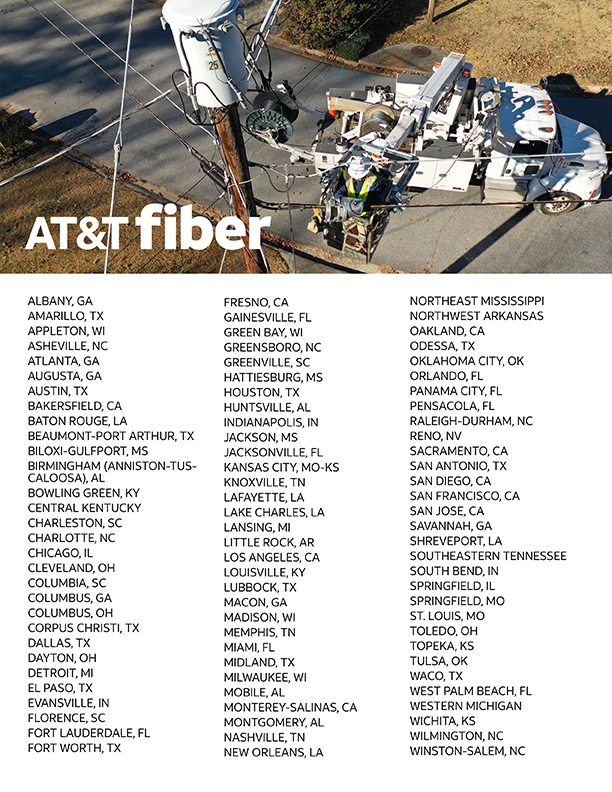
Do I think there’s a magic number of 30? No, I don’t. I think there’s a combination of things. One is unlike the investment base, to recognize the good work we’ve been doing. And then in fact, we are building and adding value back to our shareholders. And when they start to recognize that in the form of the equity in the stock, do I believe my credibility and the team’s credibility goes up? Yes, do I believe there’s going to be other opportunities for us to come out, as we hit those scaling metrics that we have in place, the supply chain metrics that we might be able to go in and say, there’s more that we could possibly attack, I’d love to be in that position to do that. And I’ve kind of put that out as a challenge to the management team to say the only thing that stands in the way between you doing 30 million and doing more is your execution and performance.
Brett Feldman: Speaking of execution, execution really has two pieces. It’s deploying the network, and then it’s driving penetration of that network. I believe you had about 5.4 million fiber subscribers as of your most recent quarters, that’s about 35% penetration [1.]. What do you think is the right target for your fiber penetration and how are you going to get there?
Note 1. Fiber-based broadband has clearly established itself as a growth engine for AT&T, which added another 246,000 fiber subscribers in Q2 2021, ending the period with 5.43 million. With about 80% of new fiber subscriber additions new to AT&T, overall broadband revenue growth at the company has finally surpassed declines in its legacy, non-fiber-to-the-premises (FTTP) broadband business.

………………………………………………………………………………………………………………………………………………..
Stankey replied: If I look what’s happening right now, and kind of where we are in our maturity scale, one of the things I’m most excited about is our new net adds to fiber right now good, almost 80% of them are new to AT&T. So, we’ve now gotten to this place where we’ve been managing the base. And we’re now shifting over where got a lot of new customers coming in. And in fact, as you saw last quarter, we’re starting to get ourselves to a point where that consumer business is a growth business today, despite the legacy drag on historic telecom products, parts and the like of legacy data products, that the fiber growth is beginning to outstrip that where we have real growth in that business. And we’re now starting to turn that corner real EBITDA growth in that business. And so, I would tell you as I step back from that, we’re going to see consistent growth. But I’m not going to be happy until we have a 50:50 share split in places where there’s two capable broadband providers. And I think there’s no reason with the product is capable as what we have out there and how fiber performs and what we’re able to do and the differentials we see in our customer satisfaction to our most significant competitor often cable in those markets, we were looking at 10, 15 points of difference in satisfaction levels, between other players in the market and ourselves, that we shouldn’t be able to achieve that over time.
Brett Feldman: You had earlier made a slight adjustment to your fiber deployment for this year, you were hoping to do 3 million homes, it’s going to be closer to two and half million and you noted some of the well reported supply chain issues as being a factor. Any update there, is there any further disruption in your supply chains and your ability to secure labor?
Stankey replied:
And we’re talking about what’s probably effectively about a 90 day delay for us to hit those numbers, and really primarily in this case, got to fiber assemblies. The way fibers built in the distribution network is we engineer it, we provide detailed engineering to our manufacturer, the manufacturer in the manufacturing facility, pre-splices and pre-assembles some of that fiber before we receive it. So, when it goes in, we’re doing less field splicing. And we’re able to basically put it up in the air or bring it through infrastructure in a way that lowers labor costs coming in. And we’re having some supply issues in the factory partly labor driven because of COVID, individuals getting sick not being able to run enough shifts, and carry through and partly some raw material issues. But those have been worked through right now our deliveries over the last 30 days have tracked to what our expectations are.
So, we feel like we’re through that dynamic right now. We should be fine with it. But look the supply chain is fragile at all levels. It’s fragile on everything. Last week, it was the number of generators, we’re deploying for power backup on cell sites, there’s, we’re going to miss a target on some of those by a couple 100 because there’s a resin base connector in the harness and we can’t get the resin. And that resin base connector, it’s a $15,000 generator that’s been held up on something that’s $0.25 part, you see these things popping up, left and right, every corner of the business. So, I don’t know what next week brings, we’re aggressively managing it. We’ve got a great supply chain organization. We’re a scaled provider, with all of our vendors. So, we lean into that, we were able to work through the fiber dynamics because we are the largest consumer of fiber in the United States. We use that ability and that expertise to make sure we get what we need to move through. So, I feel we’re managing through it, okay. I don’t think there’s anything around the challenges we’re dealing with, it gives me concern on guidance where we stand right now, but it’s going to be choppy and a little bumpy moving forward on some of these things as we move through the years.
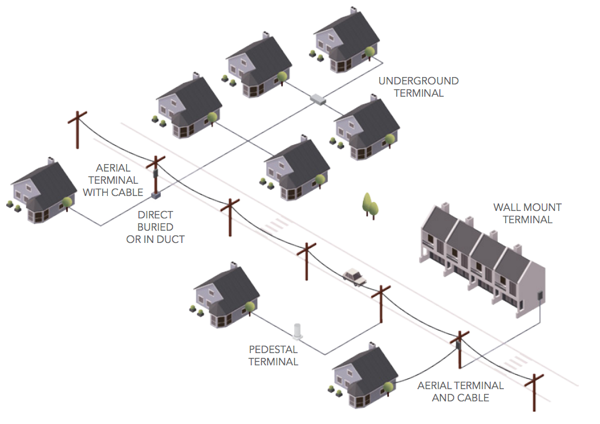
Typical fiber optic deployment to multiple homes via underground and aerial cable
……………………………………………………………………………………………………………………………………
Stankey wouldn’t say how the proposed U.S. infrastructure bill might also alter AT&T’s outlook in a way that encourages the company to explore a buildout that goes beyond 30 million locations.
“There’s a degree of uncertainty there,” he said of the bill. “But in its current form [and if] it does actually make its way into law, that’s going to change the landscape of the broadband business in this country … It will also change my posture and point of view on where we should be playing as a company.”
…………………………………………………………………………………………………………………………………………….
References:
https://techblog.comsoc.org/2021/08/12/atts-fiber-buildout-reduced-due-to-supply-constraints/
AT&T’s fiber buildout reduced due to supply constraints
AT&T has experienced recent disruptions in the supply of fiber optic cable, which has caused the company to trim back its planned fiber-to-the-premises (FTTP) buildout for 2021, according to senior EVP and CFO Pascal Desroches.
AT&T had previously said it would build out its fiber network to an additional 3 million homes passed this year. But that’s now been reduced by 1/2 million.
“Since the start of the third quarter, we are seeing dislocation across the board, including in fiber supply. We’re probably going to come in a little bit light of 3 million homes passed, probably around 2.5 million,” Desroches said Tuesday at the Oppenheimer Technology, Internet & Communications Conference, according to this transcript.
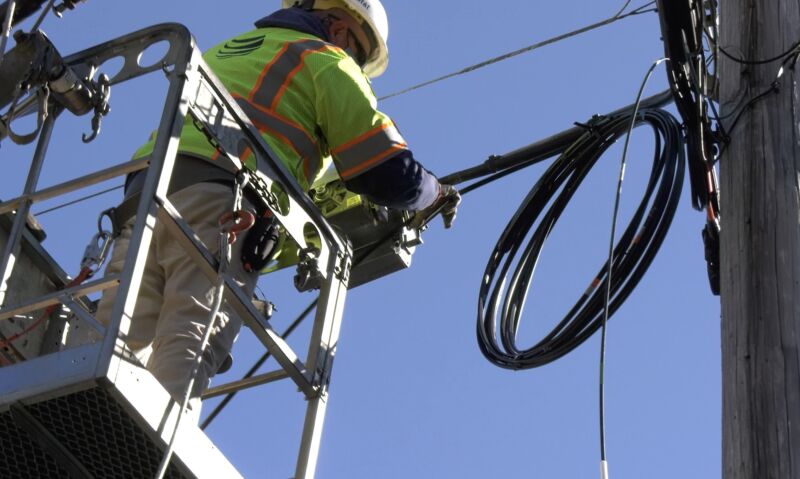
An AT&T technician working on a fiber project
………………………………………………………………………………………….
Specifically, this is what Pascal said:
But since the start of the third quarter, we are seeing dislocation across the board, including in fiber supply. And as a result of those dislocations, we had previously provided guidance of 3 million homes past this year (unedited- very bad grammar). We’re probably going to come in a little bit in light of that, probably around 2.5 million. We don’t think it’s going to impact us long term. But I think it’s really important context because if we’re feeling the pain of this, I can only imagine what others in the industry are experiencing.
John Stankey (AT&T CEO) has always been a believer in fiber. I think when he took over he identified that as a priority area because he understood from a technology standpoint, there is no better technology for connectivity. And therefore, in a world where the demands for symmetrical speed are increasing significantly, this is the technology to bet heavily on. And so we have a great position, and we are leaning into adding to that position. So it’s really a function of when you — and I think others are now recognizing it as a result of what you’ve seen in the last year in the pandemic, the need to do what we’re doing now, 2-way communication can only happen with symmetrical speed. So I think everyone has had an aha moment, like we need to deploy fiber. And so we’ve long believed that. John has long believed that, and this is just really leading into that opportunity.
As we deploy fiber, our goal is to get at least 40% penetration on homes passed. And we think in certain markets, we’ll have an opportunity to do better than that. And the other thing that is great about is when you lay fiber, you lay fiber to a community where there is both homes and businesses. So it also helps boost returns in your enterprise business. And so that’s why it is so critical that we roll this out because the ability to grow both your enterprise and your consumer business is attractive. And we think these investments will provide us with mid-teen returns over time.
I know we’re largest fiber purchaser in the country. And we have prices that are at the best and most competitive among the industry. So we feel really good about the ability to secure inventory, fiber inventory and at attractive price points and the ability to execute and the build-out at scale, something that many others don’t have.
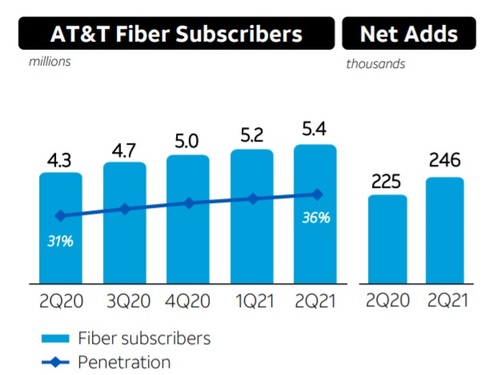
Oppenheimer moderator question: “Can you talk a little bit about where your supply comes from, I guess, both the fiber and the optical components or any other key suppliers? Is that U.S. sourced? Or is it a lot of it outsourced internationally?”
Pascal’s answer: “It is a U.S. company which has locations both domestically and outside the U.S.” [We suspect that it’s Corning].
AT&T typically has had no problem getting fiber at a low cost, Desroches said. “We’re the largest fiber purchaser in the country and we have prices that are the best and most competitive in the industry,” he said. “We feel really good about the ability to secure fiber inventory at attractive price points and the ability to execute the buildout at scale, something that many others don’t have.”
AT&T expects to catch up to its original fiber-construction estimates in the years after 2021, largely because of what Desroches called its “preferred place in the supply chain” and “committed pricing.” As AT&T said in a news release yesterday, AT&T is “working closely with the broader fiber ecosystem to address this near-term dislocation” and “is confident it will achieve the company’s target of 30 million customer locations passed by the end of 2025.”
AT&T added another 246,000 fiber broadband subs in Q2 2021, extending its total to 5.43 million, and said last month it was on pace to add about 1 million net fiber subscribers for all of 2021.
AT&T has estimated that nearly 80% of new fiber subscribers are also new AT&T customers, reversing a previous trend that saw a sizable portion of its FTTP customer net adds coming from upgrades of existing AT&T high-speed Internet customers on older VDSL and DSL platforms (which have been largely discontinued).
Speaking on AT&T’s 2Q-2021 earnings call last month, Desroches stated that the company’s consumer wireline business had reached a “major inflection point” as broadband revenues continue to surpass legacy declines. Meanwhile, AT&T’s broadband average revenue per user (ARPU) reached $54.76 in Q2 2021, improving from $51.61 in the year-ago period.
References:
Will AT&T’s huge fiber build-out win broadband market share from cablecos/MSOs?
Telefonica España to activate XGS-PON network in 2022; DELTA Fiber to follow in Netherlands
Telefonica España will begin the commercial deployment of a 10 Gbps fiber broadband network using XGS-PON technology in Spain in the first half of 2022, reports website bandaancha.eu.
The gradual rollout is part of Telefonica’s ‘Banda Ancha Abierta‘ (Open Broadband) project to install an efficient, open, scalable and virtualized network model that will facilitate fixed-mobile convergence (fixed access with mobile backhaul), Multi-access Edge Computing capabilities ( MEC), and the deployment of third-party applications.
Telefónica’s FTTH network in Spain passes 26.1 million homes as of June 2021, for which 4,726,700 clients are served through the Movistar and O2 brands. In addition, there are 2,801,700 clients of other operators served through indirect fiber optics.

The introduction of XGS-PON will introduce two new lambdas or wavelengths on the existing GPON fiber infrastructure. The same fiber cable will carry wavelengths corresponding to GPON and in parallel new colors of the laser for XGS-PON so that the two technologies do not interfere with each other.
XGS-PON raises the available throughput for an entire fiber branch to 10 Gbps downstream and 10 Gbps upstream for up to 64 client endpoints. That will permit Telefonica to commercialize speeds of up to 2.5 Gbps symmetric and, in the medium term, up to 10 Gbps.
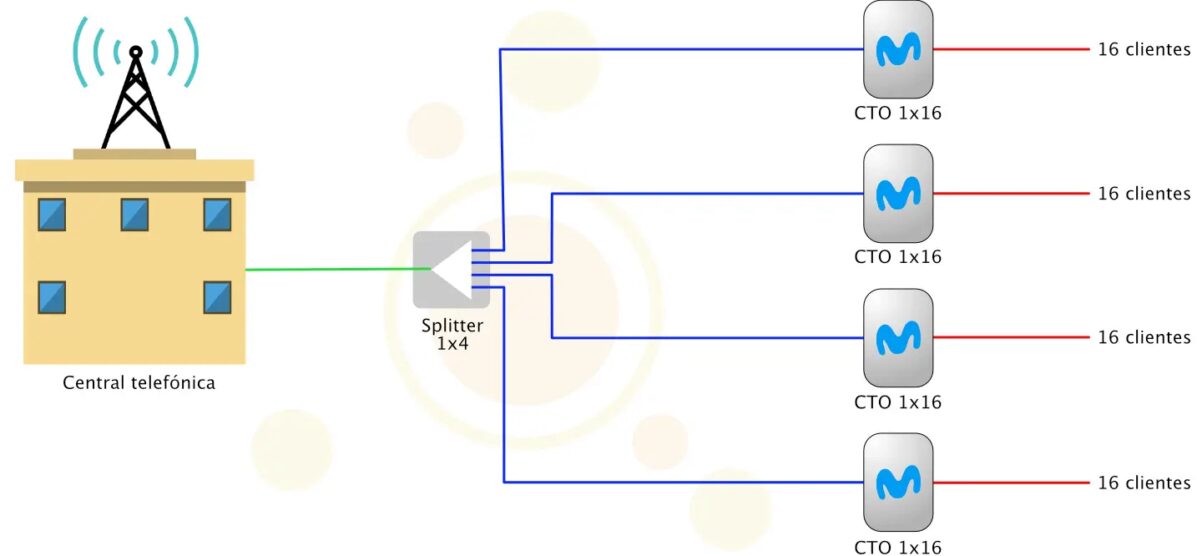
XGS-PON requires new customer premises equipment. Telefónica customers have been waiting for years for the new XHGU router that the operator announced in 2018 and that is compatible with XG-PON, in addition to bringing high-penetration WiFi 6.
With the arrival of XGS-PON, Movistar will begin to distribute this new router or temporarily provide an ONT XGS-PON.
……………………………………………………………………………………….
In a related story, DELTA Fiber has attracted 2 billion euros to back a planned roll-out of XGS-PON technology throughout the Netherlands. The 10G PON deployment will expand DELTA Fiber’s network to 2 million fiber connections in 2025. It currently expects to reach 1 million connections by the end of this year.
The company expects to begin rolling out XGS-PON this September. It will use the technology exclusively in its future builds with an eye toward making gigabit broadband widely available.
DELTA Fiber also said it plans to deploy 25G PON in the future. Along these lines, the company recently announced a partnership with Proximus of Belgium to deploy fiber to the home networks in Flanders. Proximus has already adopted 25G PON technology.
References:
https://bandaancha.eu/articulos/movistar-actualizara-velocidad-red-fibra-9973
FTTH Council Europe: FTTH/B reaches nearly 183 million (>50% of all homes)
Europe has passed over half of homes able to receive fiber broadband. According to the latest figures compiled by Idate for the FTTH Council Europe, 52.5% of homes will be covered by FTTH/B at the end of September 2020. That’s up from 49.9% a year earlier.
FTTH Council Europe revealed the following:
• Number of homes passed by fiber (FTTH/B) reaches nearly 183 million homes in EU39.
• Europe’s fiber footprint (number of homes passed) expanded the most in the past year in France (+4.6M homes passed), Italy (+2.8M), Germany (+2.7M) and the UK (+1.7M).
• Three countries are accounting for almost 60% of homes left to be passed with fiber in the EU27+UK region.
• FTTH/B Coverage in Europe surpasses more than half of total homes.
• 16.6% growth in the number of fiber subscribers.
• Iceland leads the European FTTH/B league table second year in a row. 70.7% of its households having fiber connections. Belarus (70.4%) and Spain (62.6%) came in second and third.
• Belgium, Israel, Malta and Cyprus enter the FTTH/B ranking for the first time.
The above figures cover 39 countries across Europe, where nearly 183 million homes have fibre access. For the EU and UK alone, penetration reached 43.8 percent in September, up from 39.4 percent a year earlier.
The report also shows fiber take-up is accelerating, with a subscriber penetration of 44.9 percent of lines in the 39 countries, compared to 43 percent in September 2019. In total there were 81.9 million FTTH/B subscribers in September 2020, up 16.6 percent from a year earlier. Annual growth was again strongest in France, with nearly 2.8 million subscribers added in the 12 months, followed by Russia with 1.7 million and Spain with 1.4 million.
The countries with the highest fiber penetration across Europe are Iceland and Belarus, with over 70 percent of households using fiber broadband. Spain and Sweden are at over 60 percent, and Norway, Lithuania and Portugal over 50 percent.
“The telecoms sector can play a critical role in Europe’s ability to meet its sustainability commitments
by reshaping how Europeans work, live and do business. As the most sustainable telecommunication
infrastructure technology, full fibre is a prerequisite to achieve the European Green Deal and make the
European Union’s economy more sustainable. Competitive investments in this technology should,
therefore, remain a high political priority and we look forward to working with the EU institutions,
national governments and NRAs towards removing barriers in a way to full-fibre Europe” said Vincent
Garnier, Director General of the FTTH Council Europe.
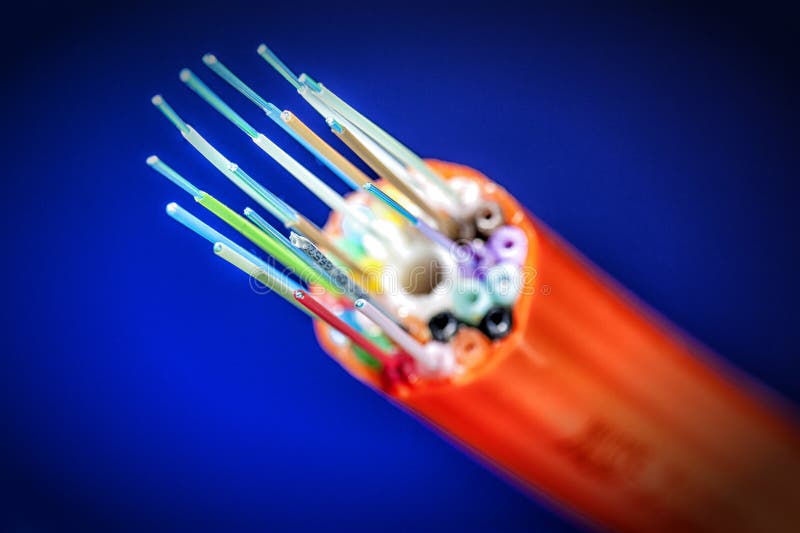
About the FTTH Council Europe:
The FTTH Council Europe is an industry organization with a mission to advance ubiquitous full fibre based connectivity to the whole of Europe. Our vision is that fiber connectivity will transform and
enhance the way we live, do business and interact, connecting everyone and everything,
everywhere.
Fiber is the future-proof, climate-friendly infrastructure which is a crucial prerequisite for
safeguarding Europe’s global competitiveness while playing a leading global role in sustainability.
The FTTH Council Europe consists of more than 150 member companies.
Contacts:
Eric Joyce, Chair, Market Intelligence Committee
[email protected]
Sergejs Mikaeljans. Communications and Public Affairs Officer
[email protected] Tel: +32 474 81 04 54
……………………………………………………………………………………………………………………
Separately, BT has increased its its total FTTP network build target from 20 million to 25 million premises by December 2026, with Openreach working to connect up to 4 million premises a year.
……………………………………………………………………………………………………………………..
References:
https://www.ftthcouncil.eu/documents/Fibre_Market_Panorama_2021_PR_final.pdf
https://register.gotowebinar.com/register/2424555495368131344 (webinar registration)

